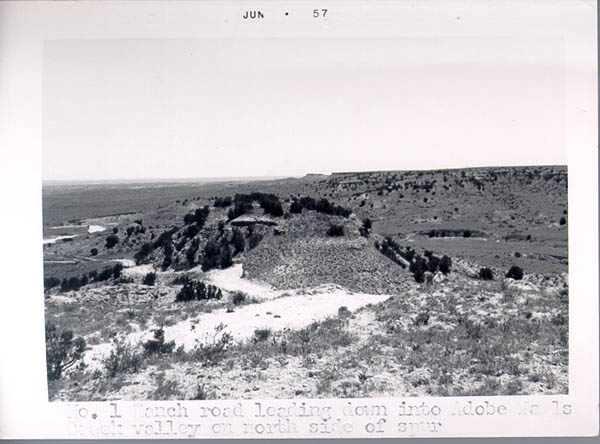|
Guipago
Guipago (Gui-pah-gho, or ''Lone Wolf he Elder' '' Alone among the Wolves '') (c. 1820 – July 1879) was the last Principal Chief of the Kiowa tribe. He was a member of the Koitsenko, the Kiowa warrior elite, and was a signer of the Little Arkansas Treaty in 1865. Background The Kiowa flourished as nomadic hunters in the early 19th Century. In 1807, they allied with the Comanche in a treaty drawn up by the Spanish Americans at Las Vegas, NM. In 1863 Lone Wolf (Guipago), accompanied Yellow Wolf, Yellow Buffalo, Little Heart, and White Face Buffalo Calf; two Kiowa women Coy and Etla; and the Indian agent, Samuel G. Colley, to Washington D. C. to establish a policy that would favor the Kiowa, but it was a futile attempt. In the Little Arkansas Treaty of 1865 Dohasan the last Chief of the unified Kiowa signed the peace treaty along with Guipago (Lone Wolf) and other chiefs. Dohasan scorned the peace policy because he knew there would be no more buffalo in Kiowa hunting grounds and Gu ... [...More Info...] [...Related Items...] OR: [Wikipedia] [Google] [Baidu] |
Kicking Bird
Kicking Bird, also known as Tene-angop'te, "The Kicking Bird", "Eagle Who Strikes with his Talons", or "Striking Eagle" (1835 - May 3, 1875) was a High Chief of the Kiowa in the 1870s. It is said that he was given his name for the way he fought his enemies. He was a Kiowa, though his grandfather had been a Crow captive who was adopted by the Kiowa. His mysterious death at Fort Sill on May 3, 1875, is the subject of much debate and speculation. Though he was a great warrior who participated in and led many battles and raids during the 1860s and 1870s, he is mostly known as an advocate for peace and education in his tribe. He enjoyed close relationships with whites, most notably the Quaker teacher Thomas Battey and Indian Agent James M. Haworth. The close relationships he enjoyed with whites engendered animosity among many of the Kiowas, making him a controversial figure. He would become the most prominent peace chief of the Kiowas, following the lead of a previous head chief, Doha ... [...More Info...] [...Related Items...] OR: [Wikipedia] [Google] [Baidu] |
Kiowa Tribe
Kiowa () people are a Native American tribe and an indigenous people of the Great Plains of the United States. They migrated southward from western Montana into the Rocky Mountains in Colorado in the 17th and 18th centuries,Pritzker 326 and eventually into the Southern Plains by the early 19th century. In 1867, the Kiowa were moved to a reservation in southwestern Oklahoma. Today, they are federally recognized as Kiowa Indian Tribe of Oklahoma with headquarters in Carnegie, Oklahoma. , there were 12,000 members. The Kiowa language (Cáuijògà), part of the Tanoan language family, is in danger of extinction, with only 20 speakers as of 2012."Kiowa Tanoan" ''Ethnologue.'' Retrieved 21 June 2012. Name In the Kiowa language, Kiowa call themselves[...More Info...] [...Related Items...] OR: [Wikipedia] [Google] [Baidu] |
Kiowa People
Kiowa () people are a Native American tribe and an indigenous people of the Great Plains of the United States. They migrated southward from western Montana into the Rocky Mountains in Colorado in the 17th and 18th centuries,Pritzker 326 and eventually into the Southern Plains by the early 19th century. In 1867, the Kiowa were moved to a reservation in southwestern Oklahoma. Today, they are federally recognized as Kiowa Indian Tribe of Oklahoma with headquarters in Carnegie, Oklahoma. , there were 12,000 members. The Kiowa language (Cáuijògà), part of the Tanoan language family, is in danger of extinction, with only 20 speakers as of 2012."Kiowa Tanoan" ''Ethnologue.'' Retrieved 21 June 2012. Name In the Kiowa language, Kiowa call themselves[...More Info...] [...Related Items...] OR: [Wikipedia] [Google] [Baidu] |
Kiowa
Kiowa () people are a Native American tribe and an indigenous people of the Great Plains of the United States. They migrated southward from western Montana into the Rocky Mountains in Colorado in the 17th and 18th centuries,Pritzker 326 and eventually into the Southern Plains by the early 19th century. In 1867, the Kiowa were moved to a reservation in southwestern Oklahoma. Today, they are federally recognized as Kiowa Indian Tribe of Oklahoma with headquarters in Carnegie, Oklahoma. , there were 12,000 members. The Kiowa language (Cáuijògà), part of the Tanoan language family, is in danger of extinction, with only 20 speakers as of 2012."Kiowa Tanoan" ''Ethnologue.'' Retrieved 21 June 2012. Name In the Kiowa language, Kiowa call themselves[...More Info...] [...Related Items...] OR: [Wikipedia] [Google] [Baidu] |
Satanta (chief)
Satanta (IPA: eˈtʰæntə (Set'tainte ( éʔ.tˀã́j.dè or ''White Bear'') (ca. 1820 – October 11, 1878) was a Kiowa war chief. He was a member of the Kiowa tribe, born around 1820, during the height of the power of the Plains Tribes, probably along the Canadian River in the traditional winter camp grounds of his people. One of the best known, and last, of the Kiowa War Chiefs, he developed a reputation as an outstanding warrior and in his twenties was made a sub-chief of his tribe, under Dohäsan, as Chief. He fought with him at the First Battle of Adobe Walls, and earned enduring fame for his use of an army bugle to confuse the troops in battle. Satanta was born the son of Chief Red Tipi and a Spanish captive and spent his youth south of the Arkansas River enjoying the peaceful alliance between the Kiowa and Comanche tribes. Orator and warrior One of best known leaders of his tribe in the 1860s–1870s, Satanta was well known for both his prowess as a warrior, and his ... [...More Info...] [...Related Items...] OR: [Wikipedia] [Google] [Baidu] |
Satank
Satank (Set-angya or Set-ankeah, translated as chief Topinabee A quiet Sitting Bear) was a prestigious Kiowa warrior and medicine man. He was born about 1800, probably in Kansas, and killed June 8, 1871. An able warrior, he became part of the Koitsenko (or Kaitsenko, ''Ko-eet-senko''), the society of the bravest Kiowa warriors. He led many raids against the Cheyennes, the Sacs, and the Foxes. As the white settlers' importance increased, he raided settlements, wagon trains, and even army outposts. Background In 1860 Satank was a frequent visitor at the Peacock Ranch near present-day Great Bend, Kansas. Satank asked Mr. George Peacock to write a letter of introduction (begging paper) saying that Satank was a good Indian. Peacock took advantage of Satank's illiteracy, and instead wrote that Satank was a bad Indian. When the Chief learned about the trick from Buffalo Bill Mathewson, Satank's tribe killed Peacock and several other people at Peacock Ranch.Bernard Bryan Smyth, The Hear ... [...More Info...] [...Related Items...] OR: [Wikipedia] [Google] [Baidu] |
Ado-ete
Big Tree (Kiowa: Ado-ete (ca. 1850–1929), was a noted Kiowa warrior and chief. He was a loyal follower of the fighting chiefs party (led by Satank, Satanta, and Guipago), and conducted frequent raids upon other tribes and white settlers, often being associated with Tsen-tainte ("White Horse"). Born in Kiowa territory (possibly present-day Oklahoma), Big Tree, along with the Kiowa, was forced onto a reservation at Fort Sill in present-day Oklahoma by the Medicine Lodge Treaty Council in 1867. He began leading raids against white settlers near the reservation and across the Red River in northern Texas. In 1870, Big Tree purportedly led a raid on Fort Sill in Indian Territory, but gained his notoriety from the Warren Wagon Train Raid the following year. Big Tree was arrested days later, along with Satanta and Satank, and tried for murder in Jacksboro, Texas. They were the first American Indian chiefs to be tried in civil court. The Warren wagon train and trial On May 18, 1871 ... [...More Info...] [...Related Items...] OR: [Wikipedia] [Google] [Baidu] |
Big Tree (war Chief)
Big Tree (Kiowa: Ado-ete (ca. 1850–1929), was a noted Kiowa warrior and chief. He was a loyal follower of the fighting chiefs party (led by Satank, Satanta, and Guipago), and conducted frequent raids upon other tribes and white settlers, often being associated with Tsen-tainte ("White Horse"). Born in Kiowa territory (possibly present-day Oklahoma), Big Tree, along with the Kiowa, was forced onto a reservation at Fort Sill in present-day Oklahoma by the Medicine Lodge Treaty Council in 1867. He began leading raids against white settlers near the reservation and across the Red River in northern Texas. In 1870, Big Tree purportedly led a raid on Fort Sill in Indian Territory, but gained his notoriety from the Warren Wagon Train Raid the following year. Big Tree was arrested days later, along with Satanta and Satank, and tried for murder in Jacksboro, Texas. They were the first American Indian chiefs to be tried in civil court. The Warren wagon train and trial On May 18, 18 ... [...More Info...] [...Related Items...] OR: [Wikipedia] [Google] [Baidu] |
Sitting Bear
Satank (Set-angya or Set-ankeah, translated as chief Topinabee A quiet Sitting Bear) was a prestigious Kiowa warrior and medicine man. He was born about 1800, probably in Kansas, and killed June 8, 1871. An able warrior, he became part of the Koitsenko (or Kaitsenko, ''Ko-eet-senko''), the society of the bravest Kiowa warriors. He led many raids against the Cheyennes, the Sacs, and the Foxes. As the white settlers' importance increased, he raided settlements, wagon trains, and even army outposts. Background In 1860 Satank was a frequent visitor at the Peacock Ranch near present-day Great Bend, Kansas. Satank asked Mr. George Peacock to write a letter of introduction (begging paper) saying that Satank was a good Indian. Peacock took advantage of Satank's illiteracy, and instead wrote that Satank was a bad Indian. When the Chief learned about the trick from Buffalo Bill Mathewson, Satank's tribe killed Peacock and several other people at Peacock Ranch.Bernard Bryan Smyth, The Hear ... [...More Info...] [...Related Items...] OR: [Wikipedia] [Google] [Baidu] |
Big Bow (chief)
Big Bow (1833"Big Bow." ''Texas State Historical Association.'' Retrieved 21 June 2012.–c. 1900) was a war leader during the 19th century, an associate of and Satanta. Big Bow's name in is Zepko-ette, also spelled Za-ko-yea. He was born in Elk Creek in |
Zepko-ete
Big Bow (1833"Big Bow." ''Texas State Historical Association.'' Retrieved 21 June 2012.–c. 1900) was a war leader during the 19th century, an associate of and Satanta. Big Bow's name in is Zepko-ette, also spelled Za-ko-yea. He was born in Elk Creek in |
White Horse (chief)
White Horse (Kiowa: Tsen-tainte, unknown c. 1840/1845–1892) was a chief of the Kiowa. White Horse attended the council between southern plains tribes and the United States at Medicine Lodge in southern Kansas which resulted in the Medicine Lodge Treaty. Despite his attendance at the treaty signing he conducted frequent raids upon other tribes and white settlers. Follower of such elders as Guipago, Satanta and old Satank, he was often associated with Big Tree (or ''Ado-ete''), this one too a young war leader in the Kiowa nation. In 1867 White Horse joined a war party of Comanches and Kiowas on a revenge raid against the Navajos, who were then living in exile on the reservation near Fort Sumner, New Mexico. On June 12, 1870, White Horse led a raiding party on an attack on Fort Sill in Indian Territory and stole seventy-three mules. On June 22 in an attack on a cattle drive on the Chisolm Trail, White Horse killed and scalped two men, prior to the arrival of a cavalry detachm ... [...More Info...] [...Related Items...] OR: [Wikipedia] [Google] [Baidu] |






.jpg)
